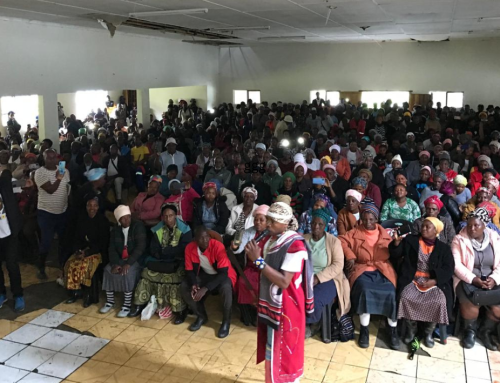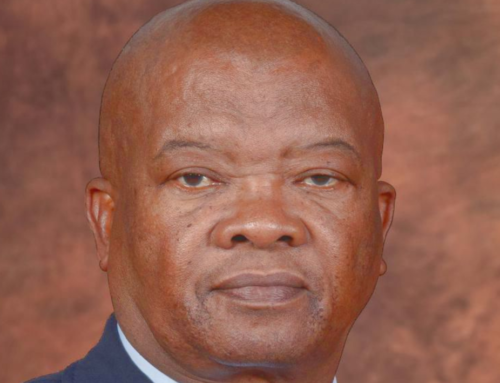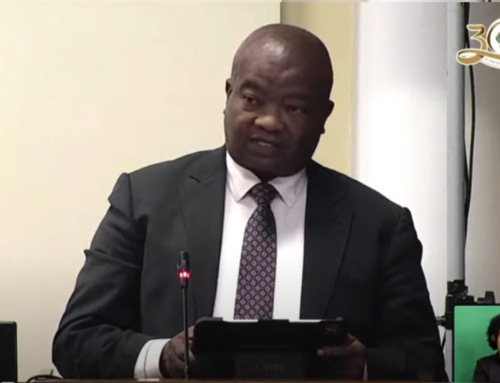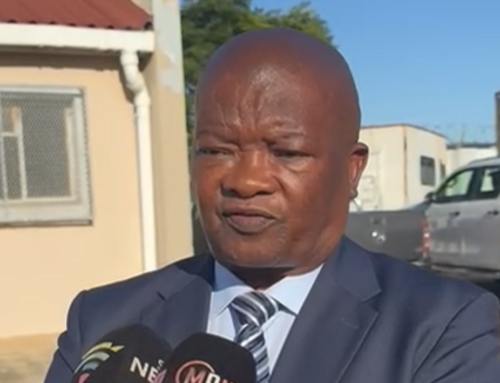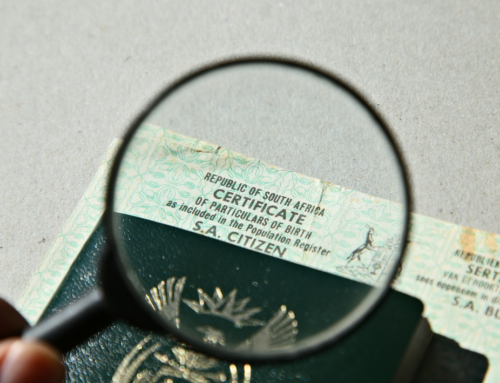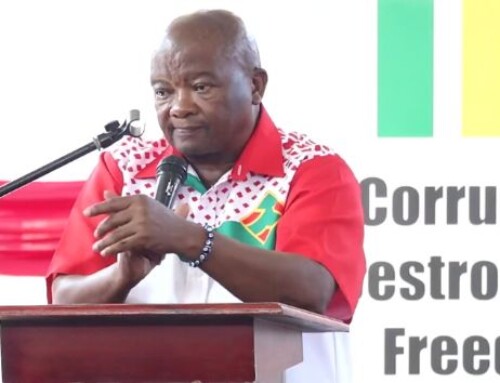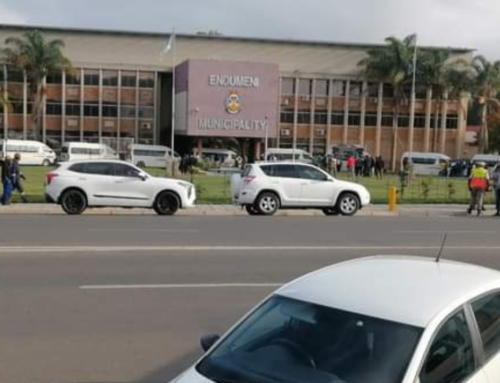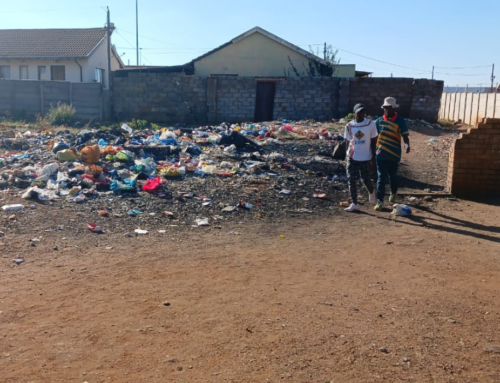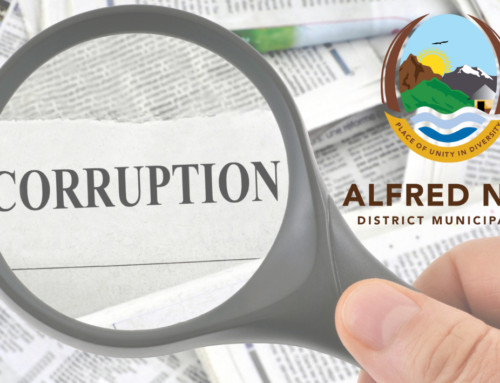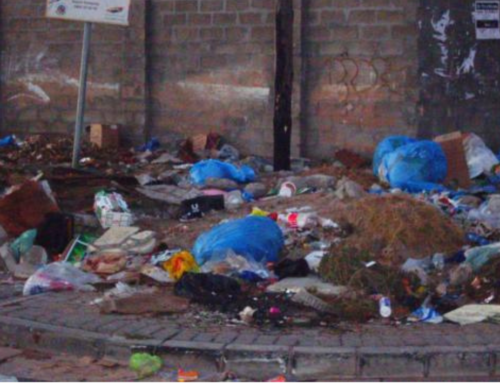 Mr CM Ramaphosa
Mr CM Ramaphosa
President of the Republic of South Africa
Private Bag X1000
Pretoria
0001
Dear Mr President
ILLEGAL CONVERSION OF TOYOTA QUANTUM PANEL VANS TO TAXIS AND AMBULANCES; ALLEGATIONS OF A SCAM OF MAJOR PROPORTIONS
What follows in this letter in detail exposes an alleged scam of major proportions aimed at deceiving the most vulnerable of our population.
1. Background
1.1. A regulatory failure in regards to South African National Standard on “Homologation of motor vehicle models” (SANS 10267) of the South African Bureau of Standards (SABS), also regulated by the National Regulator for Compulsory Specifications (NRCS), was exploited by the private sector (such as Toyota SA Motors (TSAM)); Toyota dealers and dealer groups; Toyota Financial Services (TFS); used car dealers; manufacturers, importers and builders (MIBs); banks and private money lenders (such as SA Taxi Finance (SATF)) at the expense of trusting, unsophisticated taxi buyers for great financial gain.
1.2. Prospective new taxi owners, as well as successful established taxi owners, were lured in a deceptive manner by elements within the private sector to purchase, unbeknown to them, illegally converted, non-homologised structurally defect “fake” Toyota Quantum taxis.
1.3. Many of these taxi owners participated in the new Taxi Recapitalisation Programme (TRP) whereby they have, since 2005, voluntarily scrapped their old paid-up skorokoro (worn and ragged) Toyota HiAce taxis to adhere to the Department of Transport’s (DoT) request to promote the safety of their passengers and other road users by buying and financing new recapitalised taxis.
1.4. Taxi owners utilised the R50,000 scrapping allowance (awarded by DoT`s scrapping agency) as deposits to purchase, amongst others, the newly built and safer, but more expensive recapitalised, DoT-approved Toyota Quantum taxis to replace their old and obsolete Toyota HiAce models. The first of the new and stronger generation Toyota Quantum passenger carriers was introduced during 2005 by TSAM. The old, but trusty, Toyota HiAce taxis came to the end of their lifespan and production cycle.
1.5. The VIN prefix number “JTFP” represents the 3-seater long wheelbase Toyota Quantum panel van and the “JTFH” prefix, the 3-seater short wheelbase panel van. Both vehicles were homologated by SABS/NRCS as 3-seater panel vans only suitable to carry goods and not people.
1.6. Homologation approval was also granted to the manufacturer Toyota Motor Corporation Japan (TMCJ) for their two purpose-built passenger carriers, namely the 10-seater short wheelbase with the VIN prefix “JTFR” and long wheelbase 14-seat purpose-built passenger carrier with the VIN prefix “JTFS”.
The chassis or VIN number prefix is of importance as it is the manufacturer’s permanent model identification mark stamped on a vehicle’s chassis that cannot be altered by the authorities such as NRCS and Road Traffic Management Corporation (RTMC).
1.7. Unbeknown to prospective taxi buyers, during 2005, TSAM became aware that their branded product, of high international safety repute, was compromised with a “fake”, structurally defective 3-seater panel van conversion to taxi with the VIN prefix of “JTFP” and “JTFH”.
1.8. TSAM immediately issued a letter, dated 19 October 2005 (see paragraph 2), warning its entire dealer network to not participate in this illegal practice.
2. An analysis of TSAM’s 19 October 2005 letter of warning
2.1. In 2005, TSAM warned (in head office instruction, reference GEN 10/2005/29 (Annexure A1)) its dealer principals and sales managers at all Toyota dealer franchises that the practice of converting Toyota Quantum panel vans to taxis was not only illegal, but dangerous.
2.2. Paragraph 1: TSAM clearly stated that this practice is in contravention of homologation regulations which are comprehensively described in SANS 10267 (Annexure B1)
2.2.1. The most important aspect of homologation is captured in Paragraph 2.2 of SANS 10267. The manufacturer (TMCJ) has to approve of any modification to their patented/branded product i.e. “non-transferable confirmation by the inspectorate authority [SABS/NRCS] that the manufacturer [TMCJ] has provided the inspection authority [SABS/NRCS] with the following specific [TMCJ] evidence in respect of a motor vehicle model:”
2.2.1.1. Paragraph 2.2 (a) states that the manufacturer (TMCJ) must provide “a summary of evidence showing that all relevant tests of the motor vehicle model have been conducted with successful results under appropriate controls in respect of the motor vehicle model and its variants”.
2.2.1.2. At a meeting in 2016, TSAM confirmed to the Public Protector that the development costs of a single model amount to in excess of 200 million US dollars. Most of these costs are allocated for product safety testing that upholds Toyota’s good name of high international safety repute. (Recording available)
2.2.1.3. The SABS does not possess the equipment to do comprehensive tests due to monetary constraints and therefore rely heavily on the “summary of evidence” submitted by the manufacturer that the necessary tests have successfully been completed. This was confirmed in 2017 by the SABS chief executive officer during a meeting with the Public Protector. (Recording available)
2.3. Paragraph 2 bullets 1 to 3: TSAM noted that dealers had been illegally converting 3-seater panel vans to taxis and deceivingly registering them as purpose-built 16-seater taxis prior to sale.
2.3.1. TSAM was specific that a 3-seater Quantum panel van must not be registered as a 16-seater passenger-carrying bus and should only be sold as a panel van.
2.3.2. TSAM was specific that even their purpose-built homologated 14-seater Quantum busses may not have any extra seats installed as it was not tested and approved by the manufacturer to be modified as such.
2.4. Paragraph 3:
2.4.1. TSAM stated that these conversions have not been tested and passed by the SABS saying that “You could be placing passengers at risk of injury or death should critical safety points [e.g. seat floor mountings and seatbelt anchoring points] not withstand the impact in case of an accident.” TSAM foresaw and warned their dealer network that passengers/fare-paying commuters on these “fake taxis” could be injured or die as a result in their branded “fake taxis”.
2.4.2. TSAM also warned that it and its dealer network may be sued by the client for illegal practices and endangering the lives of passengers if they were exposed.
2.4.3. TSAM also warned that they as dealers would also be in contravention of the South Africa road ordinance laws (namely the National Road Traffic Act (NRTA)). The NRTA, in clause 250, specifically states that no person shall be transported in the goods compartment of a vehicle (such as a 3-seater panel van) for reward.
2.5. Up to this point in the letter TSAM can be perceived to be acting with integrity, good intent and duty of care. What follows in paragraphs 4 speaks of deception and intent approved at the highest corporate level.
2.6. Paragraph 4:
2.6.1. TSAM made the following recommendation to their dealer network of approximately 190 franchised dealers: “If a client [taxi buyer] requires such a conversion we [TSAM] suggest that you [the Toyota dealer] explain the situation and consequences to the client and the client must agree to the following:”. It is important to note that one cannot deceivingly commit clients to illegal activities that may injure or kill someone to secure a sales transaction.
2.6.2. Through this “suggestion” TSAM acted with intent lacking any duty of care.
2.6.3. Toyota dealers perceived this statement as silent approval from TSAM and the go-ahead for them to continue in deceiving unsuspecting prospective taxi owners.
2.6.4. No unsophisticated taxi owner in his/her right frame of mind will enter into a “fake taxi” transaction when spelt out the consequences as “suggested” by TSAM. It can therefore be deducted that no prospective taxi owner was ever warned of this, by any Toyota sales staff.
2.7. Paragraph 4, bullet 1 states that “The vehicle [panel van] must be licensed and registered before the conversion is done”. TSAM hereby suggests or recommends that the dealer may go ahead with the Illegal conversion provided that they first register the vehicle as a panel van, to indemnify Toyota from any illegal practice such as the conversion to taxi.
2.7.1. Toyota dealers went ahead and invoiced these panel vans prior to the second registration as a taxi. Enclosed are samples of TFS finance agreements (two of many), where “fake” converted panel van taxis with seats already fitted, were sold and financed deceivingly as purpose-built taxis to bona fide taxi owners by a Toyota dealership from their new car floor as “suggested” by TSAM.
Kindly note the excessive pricing of respectively R254,905 and R278,297 on both agreements. Long wheelbase Quantum panel vans only retailed for R197,500 VAT inclusive during 2007. (Annexures C1 and C2)
2.7.2. TFS financed these panel vans for bona-fide taxi owners. To do what with? TFS may have acted with intent, knowing that a panel van with three seats cannot generate enough income to pay off their loan. They were well aware that the dealer and/or the taxi owner would have to illegally convert the panel van to a taxi to generate enough income to repay his/her debt. This conversion was done at the same time as the finance was granted to ensure a timeous instalment payment to TFS within thirty days. In almost all of the cases investigated by the Public Protector, the dealer assisted with the second registration as well.
2.7.3. TFS, which is situated on the dealer floor, inspects the goods prior to finance to ensure that the vehicle could be used for its intended purpose, namely a taxi. It can only be deducted that TFS may have been in syndication with the Toyota dealership to deceive the prospective buyer into buying a “fake” Quantum taxi. It is obvious from the excessively priced dealer extras, recorded on both agreements, that the monies were used for the conversions.
2.8. Paragraph 4, bullet 2 states: “Ensure that the client knows and acknowledges that the dealer in question and Toyota SA Motors will not be held liable or accountable for any failures regarding the unit, be it mechanical or otherwise.”
2.8.1. For TSAM to “suggest” in writing that its franchised dealer network participate in an illegal activity is unheard of and unjust. It is illegal to try and indemnify/distance one, as Toyota head office and your associated franchises, from foreseen deaths and severe injuries of unsuspecting commuters. TSAM’s executive management may have opened themselves to “dolus eventualis mens rea” in the event of any fatal accident recorded, with an illegally converted Quantum panel van, from date of this letter. The same principle may apply to a 3-seater panel van sold as is and financed to a bona fide taxi owner forced to convert it to an illegal 16-seater taxi.
2.9. In Paragraph 4, bullet 3, TSAM went ahead and informed their franchised dealers that the factory warranty of three years/100,000kms on converted panel vans will be cancelled. Dealers did not regard this as a major problem; they perceived it as being another silent approval from TSAM. They merely went ahead and sold their own expensive used car dealer warranties. Motor dealers indeed welcomed this opportunity as it generated additional profits at the expense of the unsuspecting taxi owner. The claims on these warranties were minimal as very few taxi owners have their taxis regularly serviced by registered mechanics and therefore repudiations of these claims were in general much higher than the norm. The dealer in turn benefitted from the low warranty claims ratio.
2.10. Paragraph 5 reads: “Please ensure that all sales people understand the procedure as explained above.”
2.10.1. The procedure spelt out by TSAM is, to say the least, colluding, deceptive, with criminal intent and lacks duty of care.
2.10.2. It is recommended that the president and owner of TMCJ, Mr Toyoda, should come and explain to the National Assembly whether or not this practice of TSAM is acceptable at an international level.
2.10.3. Mr Toyoda should confirm whether TSAM made him aware that his brand name of high international safety repute was compromised with these defective “fake taxis”. If so, when was he informed and why did he not immediately recall these vehicles to be scrapped and saved the countless lives and livelihoods of predominantly black South Africans?
2.10.4. Since 2005, TMCJ is still protected by the bilateral Berne, TRIPS and Paris conventions to uphold their esteemed brand name and patent rights against any breach thereof.
2.10.5. Mr Toyoda, as brand owner, should be asked to explain who should be financially accountable for this mess imposed on unsuspecting taxi owners since 2005, with records dating of vehicles financed as late as 2016 and cash sales recorded as late as 2018.
2.10.6. TSAM should be made to explain to the National Assembly why it has waited for four years before any attempt was made to warn the DoT, SABS and NRCS on or before 20 May 2009 of a regulatory failure it and the private sector have been exploiting.
2.11. Paragraphs 4 and 5 do not make this letter sound as one of warning, but indeed one of collusion.
2.12. TSAM appointed 44 independent used car dealers and intermediaries (Annexure D1). to deceivingly assist with their new Quantum panel van sales These used car dealers and intermediaries were all supplied with Toyota head office new car buyer numbers limited to bulk Quantum panel van purchases only. The name list was supplied following a hint and formal request to TSAM by the previous Public Protector, Advocate Thuli Madonsela.
2.12.1. All of these non-franchised used car dealers are on record to have purchased new Toyota Quantum panel vans in bulk numbers from selected Toyota dealers to be converted to “fake” Quantum taxis.
2.12.2. Why were taxi owners deceived in these transactions, subjected to double VAT payments and excessive pricing, on “fake” Quantum taxis sold by non-franchised dealers with the knowledge of TSAM?
2.12.3. A few deductions can be made, with reference to paragraph 4, bullet 1 of the “warning letter” i.e. “The vehicle must be licenced and registered before the conversion is done”.
2.12.3.1. TSAM wanted to indemnify itself from any foreseen culpability relating to “fake” Quantum taxis.
2.12.3.2. No record exists, during investigations by both Public Protectors, that non-franchised dealers were ever warned in the same manner as Toyota franchised dealers. Why?
2.12.3.3. From 2005 to 2008 Toyota recorded well-publicised record sales of Quantum panel vans that were verified by NAAMSA sales. (NAAMSA records for the period 2005 to 2012 are available)
2.12.4. During mid-2008 TSAM (Wessels family) sold the remainder of shares of 24% to TMCJ at an undisclosed amount estimated to be at around R1.7bn. Was the “fake” Quantum taxis recorded by TSAM since 2005 indeed declared as a contingent liability to TMCJ in their sales agreement? It is proposed that Mr Toyoda should be brought to testify at the National Assembly to confirm whether or not he was made aware of this.
3. Exploitation by banks
3.1. Banks eagerly participated in the finance of illegal Quantum panel van to taxi conversions. No bank has ever come to the assistance of affected taxi owners.
3.2. Due to the highly competitive nature amongst banks for the lucrative business of financing Toyota products, not a single bank has been prepared to exercise their customer’s rights as expressed in their Master Dealership Agreements (MDA) against any high volume motor dealer in relation to “fake” structurally defective Quantum taxis.
3.3. The MDA is an agreement between a bank and their approved motor dealer that, should the item financed not purports what it ought to be, the bank will insist on a full refund to their mutual customer inclusive of any legal fees incurred by him/her or cancel their dealer approval.
3.4. It is illegal for banks to finance “fake” Quantum panel van conversions to taxis as they are not designed for the purpose they are intended i.e. as a passenger carrier/taxi.
3.5. Bank contracts do not allow for any illegal conversions of sort. An MDA is designed not only to protect the consumer but the bank as well against unscrupulous and deceiving motor dealers.
3.6. Taxi owners are on record trying to negotiate with banks since 2009 as many handed back their vehicles with false promises from banks that they would look into the matter. As it turned out their “fake taxis” were sold on auctions to other unsuspecting buyers and judgements were recorded against their names.
3.7. The Public Protector mentioned this injustice in her final report (Number 37 of 2018/19 named “Illegal conversions of Toyota Quantum panel vans into mini bus taxis” dated 27 March 2019) following its systemic investigations spanning seven years.
4. SA Taxi Finance
4.1. SA Taxi Finance (Pty) Ltd (SATF) is a private moneylender that specialises in taxi finance. It was granted Developmental Credit Status immunity by the National Consumer Regulator (NCR). As a Developmental Credit Provider, it is not subjected to external quality audits similar to that of reputable commercial banks.
4.2. SATF has sourced and financed the bulk of illegal Quantum conversions from non-franchised second-hand dealers. It has charged each of these taxi owners a “vehicle sourcing fee” of R4,500 prior interest that was not only deceiving but illegal. They indeed “sourced” the wrong vehicles.
4.3. The NCR, by its own admission, has confirmed that it has never done any quality audits on the SATF’s lending. It has also admitted that, although a highly skilled legal persona, it lacks the financial skills to assess complex taxi finance operations for reckless lending practices.
4.4. The NCR went a step further and granted SATF, during 2014, as their registered Developmental Credit Provider, complete immunity against reckless lending practices.
4.5. Currently SATF as a private moneylender has an unmonitored NCR license to exploit taxi owners to the hilt with perceived reckless lending practices.
4.6. In a relatively short period of time, SATF has established a taxi book in excess of R10 billion spanning in excess of 30,000 accounts. These accounts exclude the repossessed accounts since inception, estimated to be in excess of 10,000 accounts. Alarming is the fact that, by own admission, SATF’s arrears and bad debts have been escalating.
4.7. SATF, with the approval of the NCR, is allowed to practice “bait marketing” at a national level. Bait marketing is prohibited by the Consumer Protection Act No. 68 2008 for reputable commercial banks, as it promotes reckless lending practices. SATF is exploiting their NCR Developmental Credit Provider status to the hilt with unchallenged reckless lending practices and bait marketing strategies. Bait marketing techniques advertised, amongst others, on the internet are e.g.:

(https://www.vehiclefinanceblacklisted.co.za/taxi-vehicle-finance/sa-taxi-finance/ as accessed on 24 June 2020)
4.8. Despite several warnings since first being made aware by South African Banking Risk Information Centre (SABRIC) during 2008, SATF has continued to refurbish their illegal Quantum panel van taxi repossessions and re-sell them through internal platforms with almost guaranteed finance to other unsuspecting taxi buyers.
4.8.1. Records exists of several such transactions e.g. for Mr Hlungwane (an unemployed person with no taxi operating licence, no bank account or any references) who was sold and financed a second generation repossessed illegal 2008 model Quantum taxi during 2013 at an excessive R195,460 above the recommended retail price. Mr Hlungwane complained from the outset about the poor road holding of the vehicle he purchased, whilst unbeknown to him it was an illegal panel van conversion.
He went back three times to SATF after which he was told to shut up and pay for his taxi or, otherwise, they will repossess it. Seven months after purchase he recalled swerving for a pothole in Vuwani Venda, something snapped, and the taxi rolled at low speed on a straight road with severe injuries and a fatality. (Police report confirming the same and documentation with photos of the wreck are available.)
4.8.2. I refer you to communications (Annexure F1, F2 and F3) between Ms Matshoba and SATF on a third generation 2007 model, SATF repossession illegal Quantum panel van taxi. The quality of lending expressed by SATF is, to say the least, unacceptable and deceiving. The matter is ongoing since being reported to the NCR 25 months ago.
5. Toyota Quantum ambulances
5.1. During the 2010 Standing Committee Hearings held in the Western Cape Provincial Legislature, Dr Johan van Zyl, former TSAM president, testified under oath that Toyota Japan would never allow Quantum panel vans to be converted to passenger carriers. According to transcripts he said: “Yes, Chairperson for such a thing to happen we have to apply to Japan to issue such a permit of a letter of confirmation. It will never ever be issued, because this vehicle is not designed to be utilised as a passenger transport vehicle, it is designed to be utilised as a cargo carrying vehicle”.
5.2. NRCS has confirmed that it only holds a TMCJ approval for a Toyota Quantum 10-seater purpose-built passenger vehicle to be converted to an ambulance.
5.3. Yet, long wheelbase 3-seater “JTFP” and 3-seater short wheelbase “JTFH” Toyota Quantum panel vans are being illegally converted to ambulances in South Africa. Like the illegal Quantum panel van “taxis”, the goods compartments of these vehicles are designed to carry insured goods and parcels. The light weight/flimsy design of a panel van’s goods compartment is to increase the loading capacity of the vehicle. The design of a panel van lacks the support structures and strengthening of the side walls, pillars and roof. In addition, purpose-built passenger carriers have the floor strengthened with floor support structures installed by the manufacturer in Japan at that point in time to fit up to twelve additional chairs, with two standard ones in the front, inclusive of the driver.
5.4. In South Africa 10-seater “JTFR” short wheelbase purpose-built passenger carriers are homologised as ambulances. There is a floorplan layout supplied by the manufacturer where the chairs are removed, and beds can be secured to the standard floor support structures. Rust treated locknuts are built into the floor support structures of a purpose-built Quantum passenger carrier at manufacturing level. The windows are glued in, the roof and side panels strengthened, channel lipped, fuse welded, and rust treated. The eNatis licensing passenger number of these “JTFR” ambulances are legal as the number of passengers can be reduced from the normal ten passengers to six or seven passengers, as is the norm for ambulances during an emergency.
5.5. The pricing difference between a 3-seater Quantum panel van and purpose built 10 to 14-seater Quantum passenger carrier is substantial. The pricing variance can be as low as R90,000 and as high as R130,000 per vehicle. This cost-saving is why the non-homologised 3-seater illegal Quantum panel van conversion is deceivingly preferred in relation to the more expensive homologised manufacturer approved purpose built 10 to 14-seater passenger Quantum conversion.
5.6. Upon investigating an illegal Quantum 3-seater “JTFP” panel van conversion to an ambulance, which was involved in a fatal accident, it was established that TSAM had indeed deceivingly supplied thirty “JTFP” 3-seater panel vans direct from its head office to the builder instead of a purpose-built Quantum without seats. This extensive cost-saving may have been used as an offset against other manufacturers’ tender prices to clinch the overall government hospital tenders for Toyota in the Northern Cape, North West, Gauteng and Limpopo.
5.7. The TSAM-approved builder complained bitterly that they received no layout diagram as yet for the 3-seater long wheelbase “JTFP” Quantum panel vans supplied by TSAM. They only had the manufacturer-approved 10-seater “JTFR” short wheelbase passenger carrier’s layout diagram. That same builder was busy converting 6, 10-seater “JTFR” short wheelbase passenger carrier ambulance conversions for ER 24 according to manufacturer specifications. It is proposed that the builder be summonsed to testify at the National Assembly.
5.8. Why would ER 24 opt to rather pay up to R130,000 more for a legal 10-seater “JTFR” ambulance conversion, if TSAM can bend the rules in South Africa with a cheaper substandard 3-seater “JTFP” long wheelbase panel van conversion for tender purposes?
5.9. Internet research has confirmed that internationally, only purpose-built 10-seater “JTFR” and
14-seater “JTFS” Quantum passenger carriers are converted to ambulances. Why would other countries pay billions more to TMCJ if there is a cheaper 3-seater panel van version available for conversion as seen in South Africa?
5.10. The number of single vehicle Quantum panel van ambulance accidents are, to say the least, alarming. Emergency vehicles such as these are allowed to exceed the national speed limit – most of their drivers have undergone advanced driving courses. Advanced drivers do not frequently lose control of their vehicles on clear open roads as seen in the case of “fake” Quantum panel van ambulances.
6. Conclusion
6.1. The private sector, as of today, is still exploiting the taxi industry to the hilt. Many livelihoods of taxi owners, subjected to uncontrolled reckless lending practices, are destroyed daily. Most of these taxi owners lack the finances and skills to employ quality lawyers. The best lawyers have vested interest in banks such as legal work at various levels. Banks purposely contract them to avoid facing them in a court of law. It is noted that, when studying Southern African Legal Information Institute (SAFLII) cases, private money lenders such as SATF do not hesitate to employ full-time senior counsels to defend them in courts against unsophisticated taxi owners and debt counsellors.
6.2. I again refer you to the Public Protector`s final report which is an in-depth and comprehensive investigation spanning seven years conducted by two Public Protectors. Despite all the good work conducted by the investigators involved, a perceived insignificant and bias remedial action was prescribed by the Public Protector. Copies were forwarded to the National Assembly during 2019 for discussion purposes.
6.3. Concerning is the fact that the DoT has admin marked/blacklisted some illegal Quantum panel van “taxis” on eNatis since February 2018 without any form of compensation for loss of income to the taxi owners due to no fault of their own.
6.4. The DoT went ahead and only offered R124,000 scrapping compensation to the unfortunate owners. This is the exact same amount the DoT has allocated to scrap old/vintage Toyota HiAce skorokoros.
6.5. I have yet to see whether or not the DoT obtained approval from the National Assembly to allocate these substantial amounts towards the scrapping of late model recapitalised Toyota Quantums. Both Transport Ministers’ budget speeches in 2018 and 2019 failed to mention these amounts that was allocated for skorokoro taxis only were re-directed. Why were these monies paid out by the DoT towards the scrapping of late model Toyota Quantums when it was indeed deceivingly sold by the private sector for huge and undue financial gains?
6.6. The replacement value of their business units is at least R450,000 each excluding loss of income. Should taxi owners pay the R124,000 received from the DoT as deposits on new Toyota Quantums, their total repayments including insurance will exceed R1 million over seventy-two months. Most of these taxi owners may not qualify for finance any longer as they have lost their routes or had adverse records as a result.
6.7. Where is the bulk of the contribution from TSAM and the banks who have benefitted the most from this deception? Why was there a need for the DoT to admit any guilt by means of a partial and insufficient financial contribution with taxpayers’ monies? The DoT was indeed only informed by TSAM the first time during 2009, four years after the scam was identified as a regulatory failure and exploited to the hilt by TSAM since 2005.
6.8. Following numerous fatal accidents (e.g. see photographs of a 2007 accident that caused the death of 6 primary school pupils on Stanford Road Port Elizabeth (Annexures G1 and G2)) with “fake” Quantum taxis and ambulances, why are all the “fake” provincial and private illegal Quantum “ambulances” and many illegal “taxis” still allowed to operate and not been recalled and replaced by TSAM and TMCJ as yet?
6.9. For additional information, I have enclosed are two police reports (Annexures H1 and H2) confirming low torsional rigidity causing stress fractures on illegally converted Toyota Quantum “JTFP” panel van conversions to taxis.
Something tangible has to be done to bring justice to the victims of the accidents where these “fake” taxis were involved and to the unsuspecting taxi drivers whose lives were financially ruined. It would be necessary to assemble a task team of experts and stakeholders to unpack these serious allegations and where possible that charges be laid on behalf of the poor and victims, and that the legislative framework be scrutinise as well.
Yours sincerely
Mr Bantu Holomisa, MP
UDM President
Copied to: Minister of Trade and Industry, Mr E Patel
Minister of Transport, Mr FA Mbalula
Chairperson Portfolio Committee on Transport, Mr MJ Zwane
Chairperson Portfolio Committee on Trade and Industry, Mr DM Nkosi



